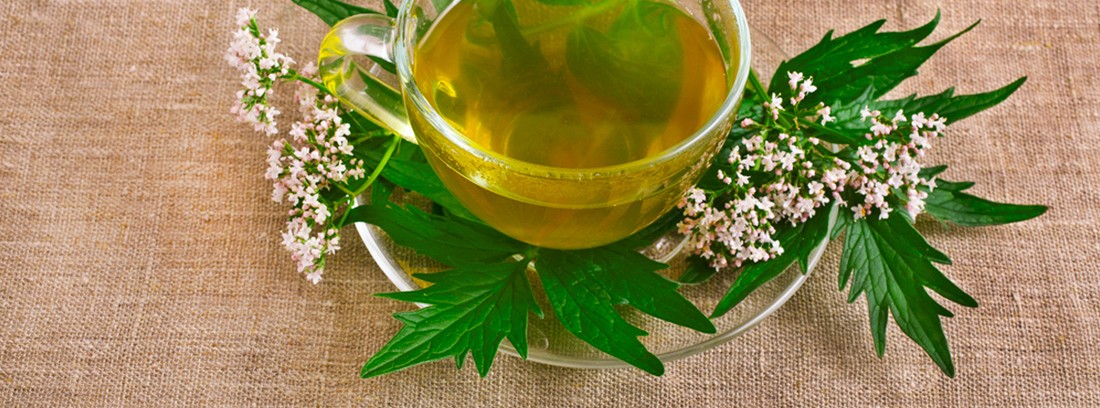Valerian: A Peaceful Day and Happy Dreams

Valerian It grows wild near streams, in mountain thickets, glades, marshy meadows, river and stream edges and is very common in the humid forests of Europe. It can also be cultivated.
Plant
Valerian is a perennial herbaceous plant, with an angular stem, that grows to over a meter in height. It has opposite leaves and they divide along the veins to form serrated leaflets. The flowers grow at the ends of the stem forming groups of flowers whose peduncles are inserted at different heights and end in the same upper plane; They are white or pinkish-white in color and bloom in spring and summer. The fruit is an achene. The part that is used for medicinal purposes is the rhizome (dried), which in this plant is very large and from which many secondary roots sprout that are also used. The rhizome with its roots is collected in autumn, from the two years of the plant, since before the roots are poor in active principles. Rhizomes and roots give off a pungent and very unpleasant odor even after drying.
His name says it all
Its name, valerian, has an etymological approximation in Latin, in the word valere which means "to be strong, to be well", which would give an idea of how this plant was appreciated in ancient times. Although other authors affirm that the name derives from the name of the Roman province of Valeria, between the Danube and the Drave, and there are even those who maintain that it comes from the German "Baldrian" that would derive from the name of the god of light, Baldur.
Its use in the past
The plant has already been described by Dioscorides, Pliny, Galen and by the renowned medical and mystical Abbess Hildegarde of Bingen (1098-1179 AD), among others. However, in ancient times it was attributed very different uses to the current ones: stimulating menstruation, lowering fever, as a diuretic, as an antiparasitic, to relieve, against eye problems, and even the aforementioned Hildegarde de Bingen recommended it for the gout pain and pleurisy. Although it seems that Galen already cited its property of facilitating sleep, apparently it was not until the seventeenth century when it began to be used to combat spasms. Its use as a tranquilizer and sedative was consolidated in the 19th century.
Like all plants with a pungent and unpleasant odor, it was believed capable of driving away evil spirits and was used for magical purposes, even in some places in northern Europe it is said that the bride and groom wore a sprig of valerian on their wedding day in the dress to drive away the envy of the spirits, especially if the bride was very beautiful.
Current uses
The current uses of valerian as a tranquilizer, calming of the nervous system, and health benefits are supported by multiple studies. It reduces the states of and has relaxing properties of the muscles. In addition, it has antispasmodic action, which is why it is also used to calm abdominal spasms.
Valerian is indicated against states of irritability, nervousness and in sleep disorders. At the right doses it induces sleep without changing its structure, so in the morning it has no "hangover" effect; it does not create addiction either. However, it must be taken into account that the effects on sleep are not always immediate and in chronic disorders in some people a treatment of two to four weeks may be needed to achieve a significant improvement. Other indications of valerian are: to relieve stomach and stomach spasms, for digestive disorders of nervous origin and as an adjunctive treatment for muscle contractures.
How to take it?
Official monographs recommend:
- For nervousness in adults: the equivalent of 2 to 3 grams of roots per intake (its equivalent in the case of dry extracts), or 1 to 3 ml of tincture in a glass of water, to be repeated up to three times a day.
- As a sleep aid: the same amount as for nervousness, taken half or an hour before bedtime, with a previous dose in the evening if necessary. In children 3 to 12 years it should only be used under medical supervision.
How to prepare a tea
Due to its unpleasant smell, it is more convenient to take valerian in capsules, lozenges or tablets, although it could also be consumed in the form of herbal tea. To prepare it, take 2 to 3 grams of root and boil for 15 minutes. After it is left to rest for 5 minutes outside the fire, it is strained and it is sweetened to taste.
«Informative note: the contents included in this section offer information related to existing therapies explained by specialists with experience in the field with an informative objective. MAPFRE does not intend under any circumstances to position itself on its suitability or expressly promote its use. "
Maria Jose Alonso Osorio Member of medicinal plants and homeopathy of the College of Pharmacists of Barcelona
(Updated at Apr 14 / 2024)